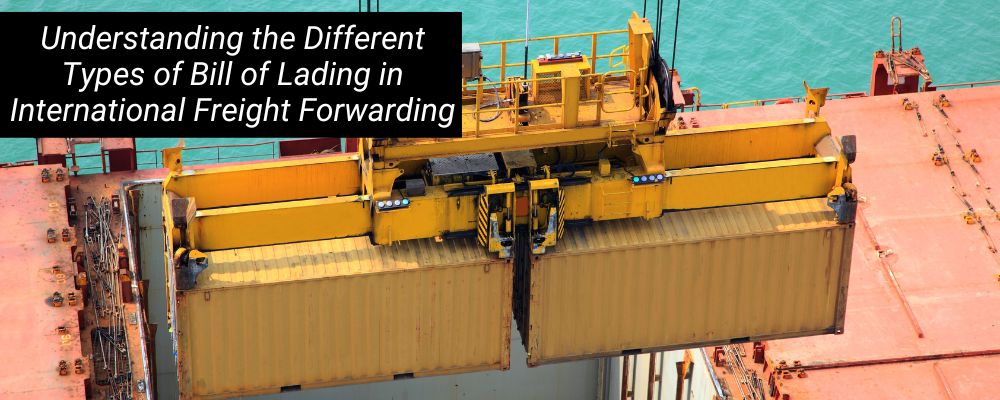
In international freight forwarding, the Bill of Lading (BL) plays a crucial role as an important document for both importers and exporters. It serves as proof that goods have been received for shipment and outlines the terms and conditions agreed upon between the parties involved. In this article, we will delve into the different types of BLs – Original BL, Surrendered BL, and Sea-Way Bill – to help you gain a comprehensive understanding of their characteristics and how they impact international trade transactions.
1. The Basics: Role of a Bill of Lading
Before exploring each type of BL, it is essential to understand its fundamental purpose. A BL serves as evidence that cargo has been loaded onto a vessel or other mode of transportation for export. Importantly, an importer must obtain the original BL from the exporter before claiming possession over their shipment.
2. Original Bill Of Lading (OBL)
The most common type is the Original BL, which consists of three copies making up one set. Sending multiple copies reduces risks associated with loss during transit. As its name suggests, only the original document holds validity when picking up shipments at port destinations.
To better grasp its flow:
- Upon departure from origin port, exporting forwarders issue three copies.
- One copy is sent via courier services like DHL or FedEx to reach importers.
- At arrival on destination ports forwarder issues Delivery Order (DO) against OBL.
- Importer exchanges OBL with DO to claim ownership over their goods.
However convenient it may seem, there are still potential risks associated with handling originals due to possible loss during transit.
3. Surrendered Bill Of Lading (Surrender)
Also known as Surrendered BL in business practice; it offers enhanced speed and availability options compared to Originals.
When using this method:
- Instead of sending the BL to the importing country, it remains collected at the origin.
- Surrendered BL does not have to be an original copy; a copy is sufficient for trade transactions.
- The surrendered status is indicated on the document or referred to as “Telex Release.”
- Speedy trade transactions are enabled by exchanging DO with a copy of BL.
Surrendered BLs are frequently employed when time-sensitive shipments arrive at ports before importers receive their Original BL. This method allows importers to take possession of goods promptly.
Moreover, exporters can leverage Surrendered BLs to control payment for products. By withholding Original BL and arranging its surrender only upon confirming payment from importers, risks associated with mailing originals and potential loss are minimized.
4. Sea-Way Bill
Unlike the security provided by other types of BLs, Sea-Way Bills cannot be used for transactions using Letters of Credit (LC). However, they offer significant advantages like ease, speed, and cost-effectiveness in certain circumstances.
Here’s how it works:
- Exporter requests issuance of a Sea-Way Bill instead of a traditional BL.
- Upon departure from port, a single Sea-Way Bill is issued.
- A copy is sent directly from exporter to importer.
- Importer can claim shipment ownership by proving their association with the specific Sea-Way Bill.
Sea-way bill eliminates costs associated with mailing originals or surrendering fees while ensuring swift cargo pickup at destination ports. It best suits situations where maintaining strong business relationships reduces concerns about controlling payments in advance.
Understanding the different types of Bill Of Lading empowers both importers and exporters in international logistics operations. Each type – Original BlL., Surrendered BlL., and Sea-way bill – has its own characteristics that impact shipping processes differently based on factors such as speed requirements, risk management strategies, and personal preferences between trading partners.
By choosing the most suitable BL for your specific situation, you can streamline logistics operations, enhance supply chain efficiency, and reduce costs associated with paperwork and potential losses.
